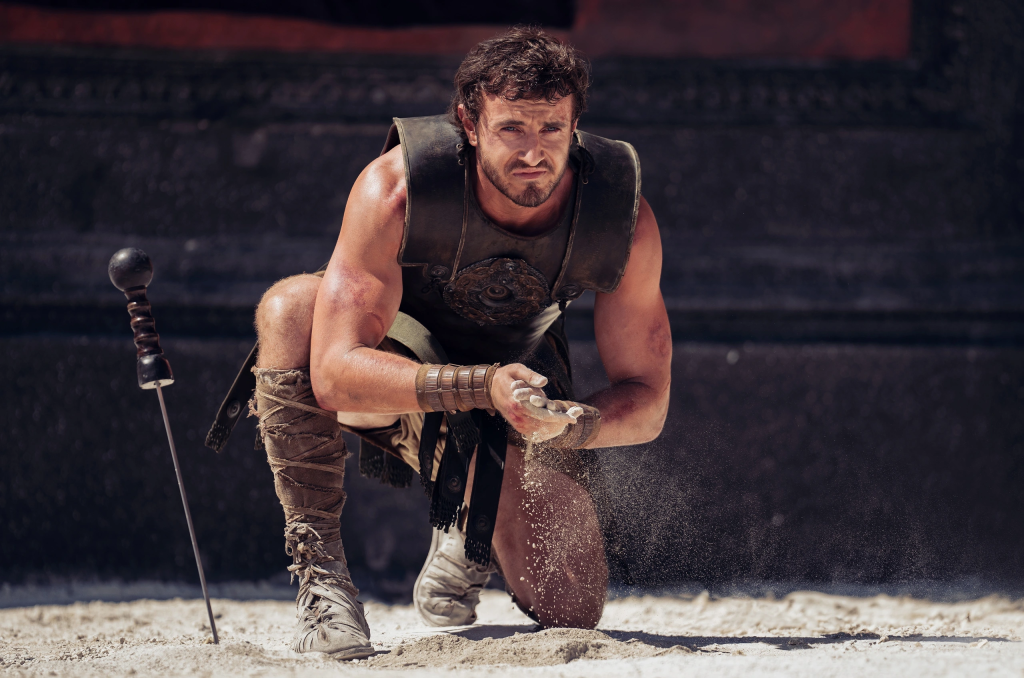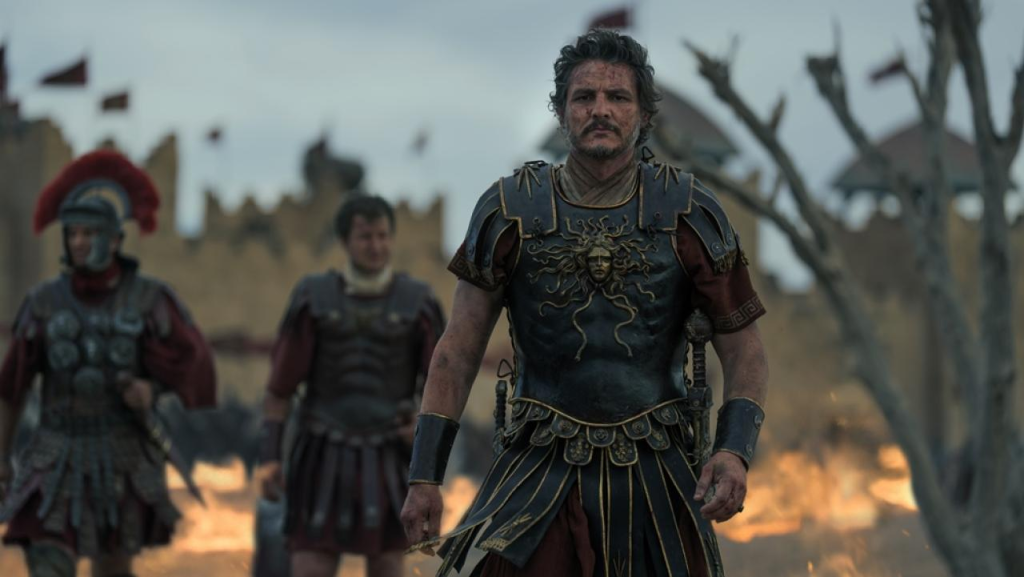Gladiator II (2024): A Roaring Return to Rome’s Blood-Soaked Arena
From Ashes to Arena: The Plot Unveiled
Gladiator II unfolds 16 years after Maximus’s death in the original film, plunging us into a Rome ruled by the tyrannical twin emperors Geta (Joseph Quinn) and Caracalla (Fred Hechinger). The story centers on Lucius Verus Aurelius (Paul Mescal), now grown from the wide-eyed boy of the first film (played then by Spencer Treat Clark). Once the grandson of Emperor Marcus Aurelius and nephew of the slain Commodus, Lucius has lived in exile in Numidia, a North African refuge, with his wife and child. His peaceful life shatters when General Marcus Acacius (Pedro Pascal), a Roman commander hardened by conquest, invades, killing his family and enslaving Lucius.
Forced into the gladiatorial pits of Rome, Lucius channels his rage, inspired by Maximus’s legacy of defiance. His path crosses with Macrinus (Denzel Washington), a former slave turned wealthy powerbroker who trains gladiators and plots to topple the emperors. As Lucius rises through brutal battles— facing rhinos, sharks, and rabid baboons in a flooded Colosseum— he discovers his mother, Lucilla (Connie Nielsen, reprising her role), is alive and entwined with Acacius. The stakes soar when Lucius learns the emperors plan to crush Rome’s spirit through spectacle and starvation.
Echoes of Power: Themes That Resound
Gladiator II is a tale of vengeance tempered by honor, a sequel that wrestles with the ghosts of its past while forging new ground. Lucius’s journey mirrors Maximus’s— loss, enslavement, rebellion— but shifts the focus from personal retribution to collective liberation. It probes power’s corrupting allure, with Macrinus’s ambition clashing against the emperors’ decadence and Lucius’s reluctant heroism. The film’s Rome is a pressure cooker of oppression, its citizens crushed yet defiant, a theme that resonates with 2024’s own global tensions.

Legacy looms large— Maximus’s shadow inspires Lucius, while Marcus Aurelius’s ideals haunt a decaying empire. The Colosseum becomes a crucible, testing not just strength but the will to resist tyranny. It’s less about individual glory than the first film and more about the cost of freedom, wrapped in a mythic sheen that elevates history into timeless drama.
Titans of the Screen: A Cast That Commands
Paul Mescal anchors the film as Lucius, blending raw physicality with a brooding intensity that marks him as a worthy heir to Crowe’s mantle. His chiseled frame and haunted eyes carry the weight of loss, though some argue he lacks Crowe’s commanding gravitas. Still, Mescal’s indie grit shines, making Lucius a reluctant warrior you can’t help but cheer for.
Denzel Washington’s Macrinus is the film’s lightning rod— a cunning, charismatic schemer who steals every scene with Shakespearean flair. His silky menace and sly grins turn a supporting role into the movie’s beating heart, earning buzz as an Oscar contender. Pedro Pascal’s Acacius is a complex foil— a soldier torn between duty and decency— his quiet strength clashing with Mescal in fight scenes dubbed “Brick Wall Paul” by Pascal himself.

Connie Nielsen returns as Lucilla, her regal poise now laced with sorrow, while Joseph Quinn and Fred Hechinger revel in the emperors’ manic excess— Quinn’s wild-eyed Geta and Hechinger’s petulant Caracalla oozing cartoonish villainy. The ensemble— including Derek Jacobi as Senator Gracchus— gels into a tapestry of grit and grandeur, each player amplifying the stakes.
A Colosseum Reborn: Visual and Sonic Mastery
Ridley Scott, at 86, proves he’s still got it, wielding a $165 million budget into a visual feast. The Colosseum roars back to life, flooded for naval battles and teeming with CGI beasts— rhinos charge, sharks circle, baboons snarl— all rendered with a polish that dazzles, if occasionally strains credulity. Cinematographer John Mathieson swaps 300’s sepia haze for a richer palette— Rome’s golden decay offset by Numidia’s sun-scorched sands— while slow-motion carnage recalls Scott’s signature style.
The action is unhinged— a rhino-riding gladiator, a sea skirmish turned slaughter— staged with operatic flair that’s both absurd and awe-inspiring. Harry Gregson-Williams’s score trades Hans Zimmer’s iconic melancholy for a bolder, drum-driven pulse, though it lacks the first film’s emotional heft. It’s a sensory barrage, relentless and audacious, that demands the big screen.
Why It Stands Tall: A Brutal, Beautiful Epic
Gladiator II doesn’t top the original— it’s too busy swinging for the fences— but it’s a beast of its own. It’s Mescal’s grit, Washington’s guile, and Scott’s unrelenting vision, all wrapped in a Rome that’s as savage as it is seductive. Flaws abound— a rushed start, cartoonish foes— yet its sheer gusto carries it. For fans of swords-and-sandals epics or anyone craving a visceral escape, it’s 148 minutes of glorious chaos— a sequel that roars where it could’ve whispered.

Thank you so much for stepping into the arena with me for this deep dive into Gladiator II! I’m truly grateful you joined me to explore this epic clash of rage and redemption— I hope it stirred your blood as much as it did mine. If you loved this journey through Rome’s brutal heart, I’d be thrilled if you checked out my other film explorations. There’s a legion of stories waiting, from historical epics to modern marvels— dive in and let me know what you think below. What’s your take on Lucius’s fight, or what epic should I tackle next? Happy watching, and see you in the next adventure!
